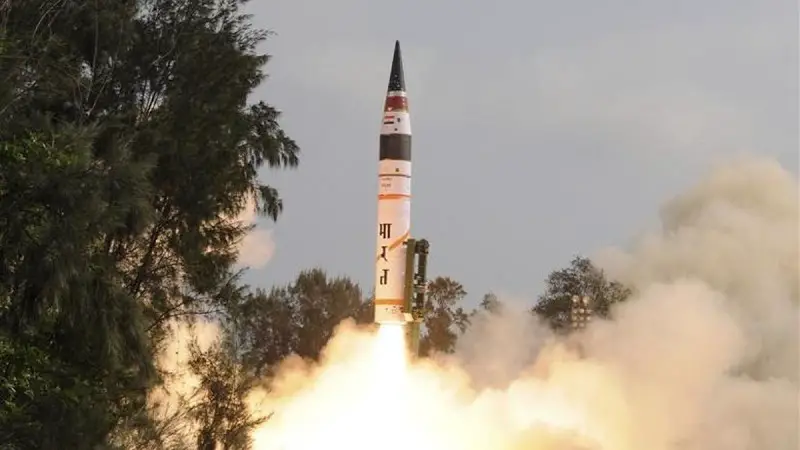A successful training launch of a Medium-Range Ballistic Missile, Agni-1 was carried out by the Strategic Forces Command from APJ Abdul Kalam Island, Odisha on June 01, 2023. The ballistic missile is a proven system, capable of striking targets with a very high degree of precision. The user training launch successfully validated all operational and technical parameters of the ballistic missile. Indian Armed Foces regularly conducts user trials of the missile mainly to train the user team to launch the missile. The tests are normally conducted by the Strategic Naval Base Command (SFC) of the Indian Armed Forces with logistic support from Defence Research and Development Organisation (DRDO).
Agni-I is used by the 334 Missile Group at Secunderabad, under the Strategic Forces Command (SFC) of the Indian Army, Agni-I was first tested at the Interim Test Range in Chandipur at 7:17AM on 22 May 1989, and is capable of carrying a conventional payload of 1,000 kg (2,200 lb) or a nuclear warhead. Agni missiles consist of one (short range) or two stages (intermediate range). These are rail and road mobile and powered by solid propellants. The Agni I has a range of 700–1,200 km. They are claimed to be a part of the “Minimum credible deterrence”. Agni-I is a single stage, solid fuel, road and rail mobile, Short-range ballistic missile (SRBM). The need for the Agni-I was felt after the Kargil war with Pakistan.
It took DRDO 15 months to develop the Agni-I after having completed Agni-II development. It is propelled by solid fuel. Maneuvering RV body-lift aerodynamics give it the ability to correct trajectory errors and reduce thermal stresses. The MRV has a velocity correction package to correct launch trajectory variances. Some Agni RV versions use a set of solid fueled thruster cartridges of predetermined impulse, allowing the onboard guidance controller to trim velocity, using discrete combination of impulse quanta along the desired spatial orientation. The 15 metre tall Agni-I missile, weighing about 12 tonnes, is capable of carrying both conventional as well as nuclear warheads of 1,000 kg.















